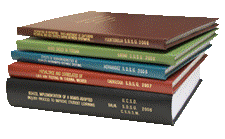Libraries, University of Nebraska-Lincoln

Archival Master’s Theses from the University of Nebraska-Lincoln
Date of this Version
12-1973
Document Type
Thesis
Citation
Thesis (M.S.)—University of Nebraska—Lincoln, 1973. Department of Civil Engineering.
Abstract
The objective of this laboratory study was to evaluate one possible method of retaining desired concentrations of microbial solids in aerated lagoons at reduced detention times.The method studied consisted of suspending a bottomless clarifier with a centered overflow weir in an aerated cell.
Variable speed Sigmamotor pumps were used to pump the influent to the cells. Activated sludge and primary effluent from the Lincoln municipal sewage treatment plant served as the seed and feed, respectively, for the laboratory cells.The laboratory apparatus included three laboratory cells that were operated with an aeration volume of 18 1. One unity was operated similarly to a conventional aerated cell for waste treatment.The other two units were similarly constructed, except they contained an in-basin clarifier. A 5-in. diameter open-ended cylinder was suspended vertically in the center of each modified cell.
Influent to each basin was pumped through a ¼- in. ID vinyl tube was discharged at a depth of approximately 2 in. near the perimeter of the cells. Effluent was drawn off at a selected location in each aeration basin through a 3/8-in. OD rigid plastic tube.The Units were operated with a 5-day detention time for the initial run. Each time a new detention period of operation began, it was one day shorter than the previous.After each run, the feed rate was immediately adjusted for the next run.
Four major conclusions were drawn from the laboratory study that involved the reduction of soluble BOD, retention of the SS within the Claeracell units resulting in higher BOD removal efficiencies for certain units, the Claeracells maintain a higher MLSS concentration and that they had alower effluent SS concentration than the unmodified aerated cell, and that the SVI values for the Claeracell units were quite high.
Advisor: Dewey, R. Andersen


Comments
Copyright 1973, the author. Used by permission.